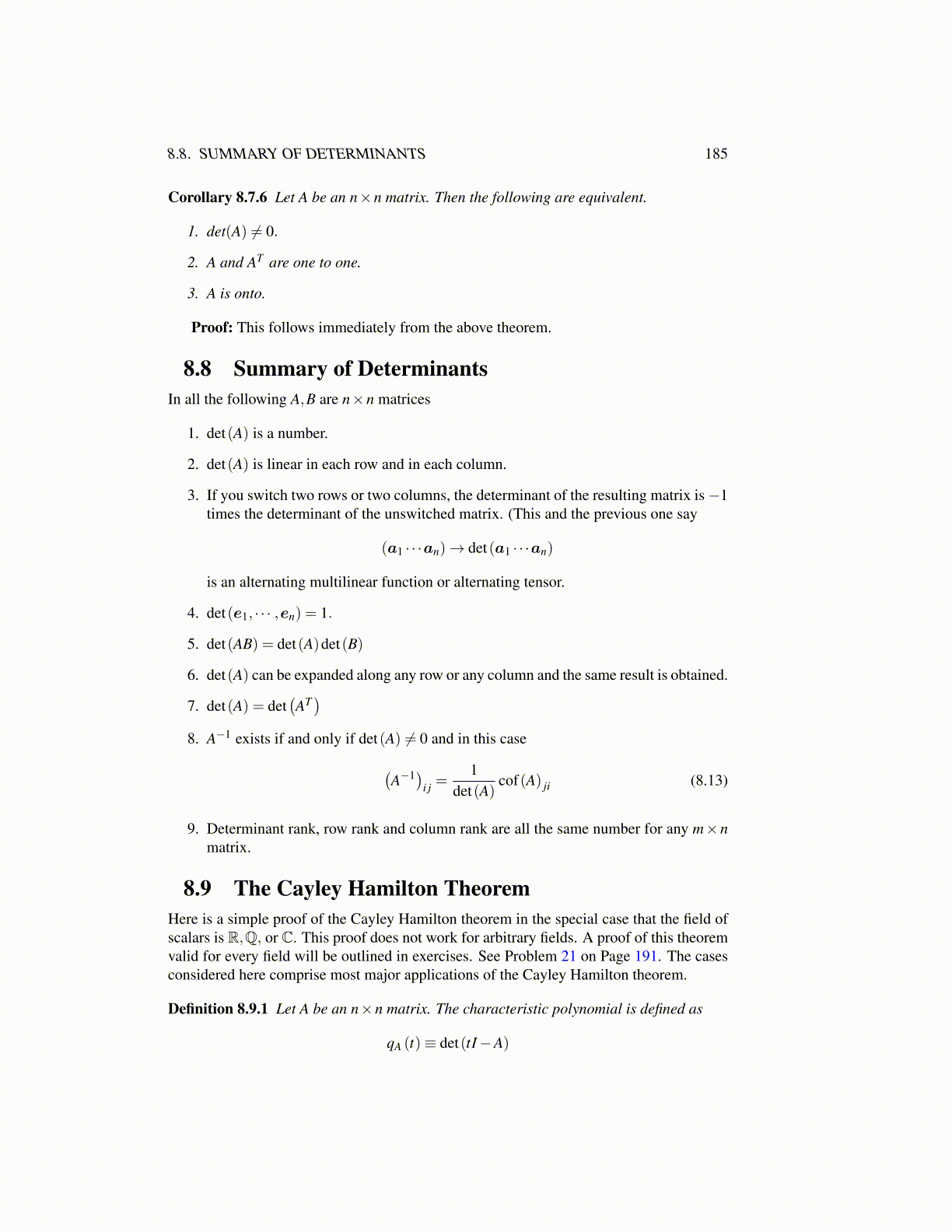
8.8. SUMMARY OF DETERMINANTS 185
Corollary 8.7.6 Let A be an n×n matrix. Then the following are equivalent.
1. det(A) ̸= 0.
2. A and AT are one to one.
3. A is onto.
Proof: This follows immediately from the above theorem.
8.8 Summary of DeterminantsIn all the following A,B are n×n matrices
1. det(A) is a number.
2. det(A) is linear in each row and in each column.
3. If you switch two rows or two columns, the determinant of the resulting matrix is−1times the determinant of the unswitched matrix. (This and the previous one say
(a1 · · ·an)→ det(a1 · · ·an)
is an alternating multilinear function or alternating tensor.
4. det(e1, · · · ,en) = 1.
5. det(AB) = det(A)det(B)
6. det(A) can be expanded along any row or any column and the same result is obtained.
7. det(A) = det(AT)
8. A−1 exists if and only if det(A) ̸= 0 and in this case
(A−1)
i j =1
det(A)cof(A) ji (8.13)
9. Determinant rank, row rank and column rank are all the same number for any m×nmatrix.
8.9 The Cayley Hamilton TheoremHere is a simple proof of the Cayley Hamilton theorem in the special case that the field ofscalars is R,Q, or C. This proof does not work for arbitrary fields. A proof of this theoremvalid for every field will be outlined in exercises. See Problem 21 on Page 191. The casesconsidered here comprise most major applications of the Cayley Hamilton theorem.
Definition 8.9.1 Let A be an n×n matrix. The characteristic polynomial is defined as
qA (t)≡ det(tI−A)